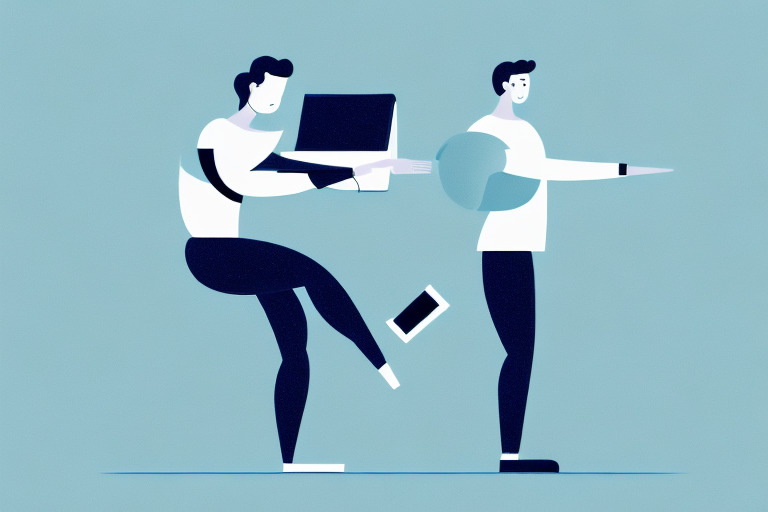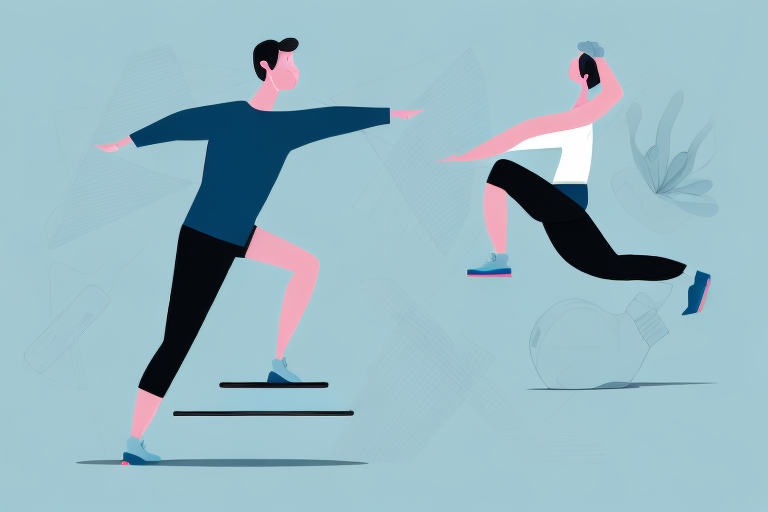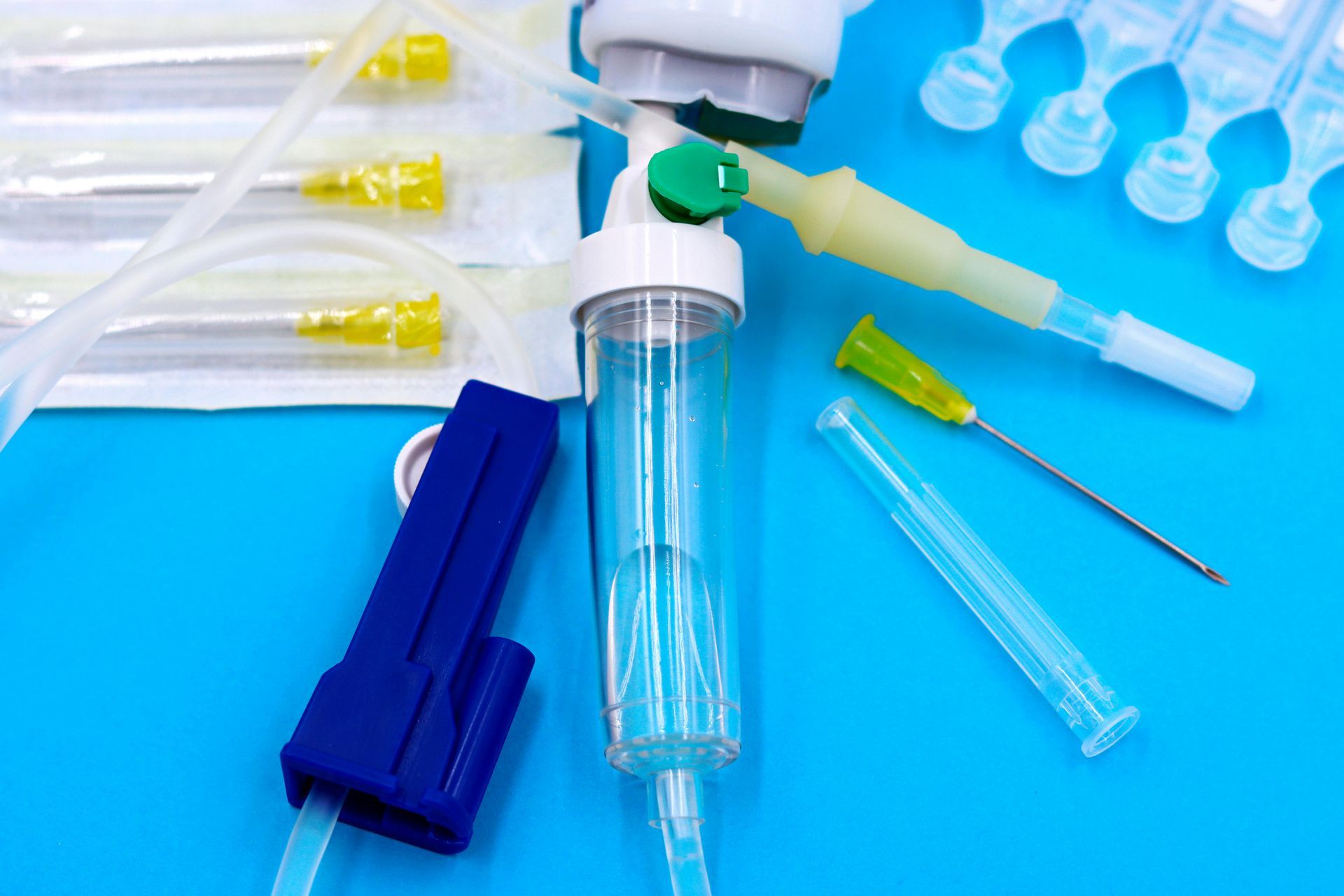7 Essential Pulled Hamstring Recovery Tips

If you have ever experienced a pulled hamstring, you know how painful and frustrating it can be. Hamstring injuries are one of the most common sports-related injuries, and they can happen to anyone from professional athletes to weekend warriors. The good news is that with the right treatment and recovery plan, you can get back to your physical activities in no time. In this article, we will discuss seven essential pulled hamstring recovery tips to help you recover quickly and prevent future injuries.
Understanding a Pulled Hamstring
A pulled hamstring, or hamstring strain, refers to the tearing or stretching of one or more of the three muscles that run down the back of the thigh. These muscles are responsible for bending the knee and extending the hip. A pulled hamstring can range from a mild strain to a severe tear, which may require surgery. It is essential to seek medical attention if you suspect a severe injury.
Hamstring injuries are common in athletes and individuals who engage in physical activities that require sudden movements, such as sprinting or jumping. The hamstring muscles can become strained or torn when they are stretched beyond their limit or overloaded with excessive force.
Causes of a Pulled Hamstring
Pulled hamstrings can occur due to several reasons, including inadequate warm-up, overuse, poor flexibility, and muscle imbalances. Athletes who participate in sports that require running, jumping, or sudden stops and starts are at a higher risk of suffering from this injury.
Inadequate warm-up can cause a pulled hamstring as the muscles are not prepared for the sudden movements required during physical activity. Overuse of the hamstring muscles, such as running long distances without proper rest, can also lead to a pulled hamstring. Poor flexibility in the hamstring muscles can make them more vulnerable to injury, while muscle imbalances can cause the muscles to work harder than they should, leading to strain or tear.
Symptoms of a Pulled Hamstring
The symptoms of a pulled hamstring include pain, swelling, tenderness, and bruising in the back of the thigh. You may also experience difficulty walking or standing, cramping, or muscle spasms.
If you experience any of these symptoms, it is important to rest the affected leg and seek medical attention. Ignoring the symptoms or continuing physical activity can worsen the injury and lead to long-term damage.
Severity Levels of a Pulled Hamstring
Pulled hamstrings are graded based on their severity:
- Mild strain: Minimal tearing of the muscle fibers, with little to no loss of strength or mobility.
- Moderate strain: Partial tearing of the muscle fibers, with noticeable weakness and decreased range of motion.
- Severe strain: Complete tearing of the muscle fibers, with significant loss of strength and mobility.
The severity of the injury will determine the treatment required. Mild strains can often be treated with rest, ice, compression, and elevation (RICE) therapy, while moderate to severe strains may require physical therapy or surgery.
It is important to take preventive measures to avoid a pulled hamstring, such as stretching before physical activity, maintaining good flexibility, and gradually increasing the intensity of physical activity. If you have had a previous hamstring injury, it is important to take extra precautions to prevent re-injury.

Immediate First Aid for a Pulled Hamstring
If you suspect a pulled hamstring, it is crucial to take immediate action to prevent further damage and aid in the recovery process. The following RICE method can help:
RICE Method
A pulled hamstring is a common injury that can occur during physical activity, such as running or jumping. It happens when one or more of the muscles at the back of the thigh gets stretched too far or torn. This can cause pain, swelling, and difficulty moving the leg.
- Rest: Avoid any activity that exacerbates the pain and discomfort. Resting the affected leg can help prevent further damage and promote healing. You may need to use crutches or a cane to keep weight off the injured leg.
- Ice: Apply ice to the affected area for 20 minutes every two hours to reduce pain and swelling. Ice can help numb the area and reduce inflammation. Make sure to wrap the ice pack in a towel or cloth to avoid direct contact with the skin.
- Compression: Wrap the affected area with a bandage to prevent swelling. Compression can help reduce fluid buildup and support the injured muscle. Make sure not to wrap it too tightly, as this can impede blood flow.
- Elevation: Elevate the affected leg above the heart level to reduce swelling. This can help improve blood flow and reduce pressure on the injured muscle. You can prop up your leg with pillows or a cushion.
Pain Relief Options
In addition to the RICE method, several pain relief options can help ease the discomfort and promote healing. These include over-the-counter pain medications, such as Ibuprofen or acetaminophen. These medications can help reduce pain and inflammation, but make sure to follow the recommended dosage and consult with your doctor if you have any underlying health conditions.
You may also use heat therapy, massage, or acupuncture to relieve pain and soreness. Heat therapy can help improve blood flow and relax the muscles, while massage and acupuncture can help release tension and promote healing. Make sure to consult with a licensed professional before trying any of these methods.
It's important to give your body enough time to heal before returning to physical activity. Depending on the severity of the injury, it may take a few weeks to a few months to fully recover. Make sure to consult with your doctor or physical therapist before resuming any activity.

Seeking Professional Help
While mild hamstring strains can heal on their own, it is important to remember that not all injuries are created equal. Moderate or severe injuries may require professional care. Seeking medical attention can help you recover faster and prevent further damage to your muscles.
If you experience the following symptoms, it is essential to consult a doctor or a physical therapist:
When to Consult a Doctor
- The pain and swelling do not improve after a few days of home treatment. This could be a sign of a more severe injury that requires medical attention.
- You experience severe pain or limited mobility. This may indicate a muscle tear or a more serious injury that requires immediate attention.
- You heard a popping sound during the injury. This is a common sign of a muscle tear or strain and requires medical attention.
- The affected area is warm to the touch, red, or inflamed. This could be a sign of an infection or inflammation that requires medical attention.
Physical Therapy for Hamstring Recovery
If your injury requires physical therapy, your therapist will create a customized plan to help you regain strength, flexibility, and mobility. Physical therapy exercises may include stretching, strengthening, and balance exercises to prevent future injuries. Your therapist may also use modalities such as heat, ice, or electrical stimulation to reduce pain and inflammation.
During your physical therapy sessions, your therapist will work with you to help you achieve your goals and monitor your progress. They will also provide you with guidance on how to continue your exercises at home to ensure a successful recovery.
Remember, seeking professional help is crucial to your recovery. Do not hesitate to consult a doctor or physical therapist if you experience any of the symptoms mentioned above.

Stretching and Strengthening Exercises
Hamstring injuries can be debilitating and can take a long time to heal. The hamstrings are a group of muscles located at the back of the thigh, and they are responsible for bending the knee and extending the hip. These muscles are essential for running, jumping, and other activities that involve the lower body. If you have suffered a hamstring injury, stretching and strengthening exercises are crucial for a successful recovery and preventing future injuries.
When you first start your recovery, it is essential to work with a physical therapist who can guide you through the process. Your physical therapist may recommend the following exercises:
Gentle Stretches for Hamstring Recovery
Perform these stretches after warming up to increase blood flow and flexibility:</p>
- Hamstring stretch: Sit on the floor with your legs straight out in front of you and lean forward, reaching for your toes. Hold this position for 30 seconds and repeat three times.
- Wall hamstring stretch: Lie on your back with your legs up a wall, and stretch your legs towards the ceiling. Hold this position for 30 seconds and repeat three times.
- Seated forward bend: Sit on the floor with bent knees and feet flat on the ground, then slowly lean forward until you feel a stretch in your hamstrings. Hold this position for 30 seconds and repeat three times.
Stretching is essential for hamstring recovery because it helps to increase blood flow to the muscles, which can speed up the healing process. It also helps to improve flexibility, which can reduce the risk of future injuries.
Strengthening Exercises to Prevent Future Injuries
Perform these exercises to regain strength and prevent future injuries:
- Hamstring curls: Stand behind a chair and hold on to the backrest for support, then lift one foot towards your back, bending your knee. Repeat this exercise 10 times on each leg.
- Bridge: Lie on your back with your knees bent and feet flat on the ground, then slowly lift your hips towards the ceiling. Hold this position for five seconds and repeat 10 times.
- Single-leg deadlift: Stand on one foot and bend forward, reaching for the ground with the opposite hand. Repeat this exercise 10 times on each leg.
Strengthening exercises are essential for preventing future injuries because they help to build up the muscles in the hamstring group. Strong muscles are less likely to be injured, and they can help to support the joints and improve overall athletic performance.
Remember to take it slow when you are recovering from a hamstring injury. Rushing back into physical activity too quickly can cause further damage and delay your recovery. Work with your physical therapist to develop a recovery plan that is tailored to your needs and abilities.
The Role of Nutrition in Recovery
Recovery is an essential part of any exercise routine. It is during the recovery phase that the body repairs and strengthens the muscles that have been worked out. While rest is an important factor in recovery, nutrition also plays a crucial role in aiding the body's natural healing process. Proper nutrition can help promote muscle healing and recovery.
It is important to eat a healthy, balanced diet with sufficient protein, carbohydrates, and vitamins. Protein is essential for muscle repair and growth, while carbohydrates provide the body with energy to perform physical activities. Vitamins and minerals are also crucial for overall health and wellness.
Foods to Support Muscle Healing
The following foods can aid in muscle recovery:
- Lean protein sources: Chicken, turkey, fish, tofu, beans, nuts, and seeds are all excellent sources of lean protein. These foods provide the body with the necessary amino acids to repair and rebuild muscle tissue.
- Complex carbohydrates: Whole grains, vegetables, fruits, and legumes are all excellent sources of complex carbohydrates. These foods provide the body with sustained energy to perform physical activities and aid in muscle recovery.
- Omega-3 fatty acids: Fatty fish, flaxseed oil, and chia seeds are all excellent sources of omega-3 fatty acids. These healthy fats have anti-inflammatory properties that can aid in muscle recovery and reduce muscle soreness.
It is important to note that while these foods can aid in muscle recovery, they should be consumed in moderation and as part of a balanced diet.
Supplements for Muscle Recovery
In addition to a healthy diet, supplements can also aid in muscle recovery. Collagen, B vitamins, and magnesium are all supplements that have been shown to aid in muscle recovery. Collagen is a protein that is essential for the health of connective tissues, including tendons and ligaments.
B vitamins, particularly B6 and B12, are essential for energy production and can aid in muscle recovery. Magnesium is a mineral that is important for muscle and nerve function, and can aid in reducing muscle soreness and improving muscle function.
However, it is recommended to consult with a healthcare professional before taking any supplements. Some supplements may interact with medications or have adverse effects on certain health conditions.
In conclusion, proper nutrition is essential for muscle recovery. A balanced diet with sufficient protein, carbohydrates, and vitamins, along with supplements as recommended by a healthcare professional, can aid in muscle healing and promote overall health and wellness.
Returning to Physical Activity
Hamstring injuries can be painful and frustrating. However, with proper care and rehabilitation, you can return to your favorite physical activities. Here are some tips to help you progress gradually and safely:
Gradual Progression
When returning to physical activity after a hamstring injury, it is important to start slowly and gradually increase your level of activity. This will help prevent re-injury and allow your body to adjust to the demands of exercise. Here are some tips:
- Start with gentle exercises, such as walking or swimming. These low-impact activities will help improve your cardiovascular endurance and build strength in your hamstrings without putting too much stress on the injured area.
- Gradually increase the intensity and duration of your workouts. As your strength and flexibility improve, you can start to incorporate more challenging exercises, such as jogging or cycling. Just remember to take it slow and listen to your body.
- Take rest breaks as needed to avoid overuse. It is important to give your muscles time to rest and recover between workouts. If you feel any pain or discomfort, take a break and allow your body to heal.
Tips for Preventing Re-Injury
Once you have recovered from your hamstring injury, it is important to take steps to prevent re-injury. Here are some tips to help you stay healthy and active:
- Always warm up before exercising. A proper warm-up can help increase blood flow to your muscles and reduce the risk of injury. Try some light cardio, such as jumping jacks or jogging in place, followed by some dynamic stretching.
- Stretch regularly to maintain flexibility. Tight muscles can increase your risk of injury, so be sure to stretch regularly. Focus on stretching your hamstrings, as well as your quadriceps, hip flexors, and glutes.
- Avoid sudden movements or changes in direction. Sudden movements, such as jumping or pivoting, can put a lot of stress on your hamstrings. If you play sports, be sure to practice proper technique and avoid overexerting yourself.
- Wear appropriate footwear and equipment. Make sure you have the right shoes for your activity, whether it's running, hiking, or playing sports. You may also want to consider wearing a brace or compression sleeve to support your injured hamstring.
Remember, returning to physical activity after a hamstring injury takes time and patience. Don't push yourself too hard, and always listen to your body. With the right care and rehabilitation, you can get back to doing the things you love.
Long-Term Care and Prevention
Hamstring injuries can be painful and debilitating, but with proper care and prevention, you can reduce your risk of re-injury and maintain your physical abilities. In addition to the tips provided in the previous section, here are some additional strategies to help you stay healthy and active:
Maintaining Flexibility and Strength
Stretching and strengthening exercises are crucial to preventing future hamstring injuries. In addition to the exercises recommended by your healthcare provider, consider incorporating yoga, Pilates, or other forms of exercise that emphasize flexibility and core strength. These activities can help improve your posture, balance, and
overall physical function.
Proper Nutrition and Hydration
Your body needs adequate fuel and hydration to perform at its best and recover from injuries. Make sure to eat a balanced diet with plenty of protein, healthy fats, and complex carbohydrates.
Stay hydrated by drinking water throughout the day, especially before, during, and after exercise.
Rest and Recovery
Rest is an essential component of any injury recovery plan. Make sure to give your body enough time to heal and avoid over-exerting yourself, even if you feel better. Incorporate rest days into your exercise routine and prioritize good sleep habits to help your body repair and regenerate.
Proper Gear and Technique
Wearing proper footwear, clothing, and equipment can help reduce your risk of injury during physical activity. Make sure to choose gear that fits well and is appropriate for the activity you are doing. Additionally, work with a coach or trainer to learn proper technique and form for exercises and movements to avoid unnecessary strain on your muscles and joints.
Regular Check-Ups and Screenings
Regular check-ups with your healthcare provider can help identify potential health issues before they become serious problems. Make sure to schedule regular physical exams, blood tests, and other screenings as recommended by your doctor. Additionally, consider seeing a physical therapist or sports medicine specialist for regular evaluations and guidance on injury prevention and recovery.
Importance of Warm-Up and Cool-Down
Warming up before exercise and cooling down afterward can help prepare your body for physical activity and reduce the risk of muscle injuries and soreness. In addition to light aerobic exercise, stretching, and foam rolling, consider incorporating dynamic warm-up exercises, such as lunges, squats, and leg swings, to help activate your muscles and get your blood flowing.
By following these strategies and incorporating them into your daily routine, you can help reduce your risk of hamstring injuries and maintain your physical abilities for years to come. However, if you experience severe pain or limited mobility, it is important to seek professional advice from your healthcare provider or a physical therapist.










